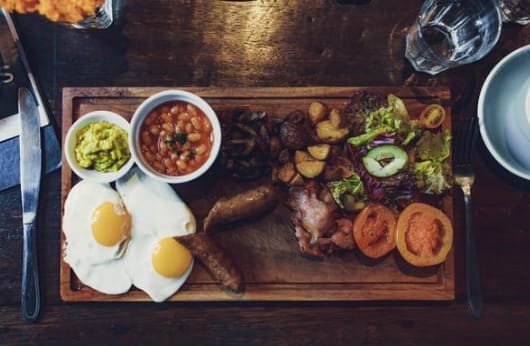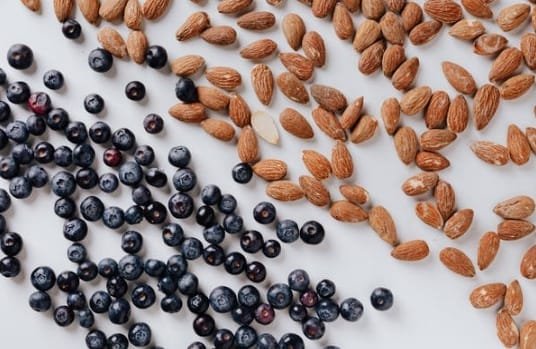
by admin | May 22, 2022 | Mind
Metacognition – How To Apply It
Using Your Most Powerful Tool – Self Awareness! Do you know what your superpower is? No, not THAT superpower. We’re talking about your most powerful tool – self-awareness! Self-awareness is the key to unlocking your potential and achieving your goals.
When you know yourself well, you can use your strengths to your advantage and work on improving your weaknesses. With self-awareness, you can make better decisions and become a happier, more fulfilled person. In part 1, we touched on the art of “being aware of your awareness,” also referred to as “metacognition.”
In this second part of the article series, we’re going to delve deeper into the so-called “metacognitive skills.” Metacognitive skills provide a basis for broader psychological self-awareness, including how we gain a deeper understanding of themselves and the world around them.
It could also be applied in different social scenarios as a way of inspecting yourself internally. So without further ado, let’s discuss this fascinating topic further.
The 3 Pillars – Planning, Monitoring, and Evaluation
Much like anything else that we can apply in our lives, metacognition too has its fundamentals. In our eyes, those three fundamentals are namely your ability to plan, monitor, evaluate and adjust! Let’s discuss these three pillars!
Planning Strategies.

Planning refers to the selection of strategies and allocation of resources that influence task performance. Selecting good strategies and good allocation of sources is a sign of accurate planning. As people learn to plan, they learn to anticipate the strengths and weaknesses of their ideas.
Planning strategies used to strengthen metacognition helps to scrutinize plans at a time when they can most easily be changed. Dr. Robin Fogarty and Brian Pete call this strategy “Inking your Thinking.” It’s a simple writing log that requires a person to reflect on an event, lesson, learning, etc., they are going to embark on.
Sample starters may include “I predict… “, “A question I have is… “, or “A picture I have of this is… “. Writing logs are also helpful in the middle or end of assignments, projects, etc.
Monitoring Strategies.

Monitoring strategies used to strengthen metacognition help people check their progress and review their thinking at various stages. Different from scrutinizing, this strategy is more reflective in nature. It also allows for adjustments while the plan, activity, or assignment is in motion.
Monitoring strategies encourage recovery of learning. For example, we can recover our memory by scanning or re-reading. Fogarty and Pete call this “Alarm Clock.” It is used to rethink an idea once you realize something is amiss.
The idea is to develop internal signals that sound an alarm. It involves thinking about “What I did,” then reviewing the pluses and minuses of one’s action. Finally, it means asking, “What other thoughts do I have?” moving forward.
Remember, the idea is not to tell yourself or others what you or they did wrong. Rather, help monitor and think about learning. These are formative skills that last a lifetime.
Evaluation Strategies.

Evaluation refers to assessing the end product of a particular task. The efficiency with which the task has been executed is also assessed. According to Fogarty and Pete, the evaluation strategies of metacognition “are much like the mirror in a powder compact.”
“When one opens the compact and looks in the mirror, only a small portion of the face is reflected back, but that particular part is magnified so that every nuance, every flaw, and every bump is blatantly in view.” Having this enlarged view makes inspection much easier.
When people inspect part of their work, they learn about the nuances of their thinking process. They grow in the ability to apply their learning to new situations. “Connecting Elephants’ ‘ is one of many metacognitive strategies to help students and people self-evaluate and apply their learnings.
In this exercise, the metaphor of three elephants is used. The elephants are walking together in a circle, connected to the trunk and tail of the other elephant. The three elephants represent three big questions – 1) What is the big idea?, 2) How does this connect to other big ideas? and 3) How can I use this big idea?
Using the image of a “big idea” helps people magnify and synthesize their learning. It also encourages them to think about how that newly learned knowledge can be applied to new situations. Closely related to the word metacognition are the different learning styles. Anyone who knows, or knows and thinks about thinking, knows which learning style suits them best. (Yes, that was a complicated sentence.)
Final Thoughts
It’s time to start thinking about your thoughts. If you’re an introvert, the chances are that this isn’t anything new for you. Introverts have a natural tendency towards deep thought and reflection on their experiences in the world around them – which might be why they find social interactions so exhausting!
But regardless of whether or not it comes naturally to you, metacognition is something worth practicing because it can help improve moods, relationships with others, and even mental health. So, hey, stay aware of your awareness and do your meditations!

by admin | May 21, 2022 | Fitness
Muscle building Nutrition | Part 3 – Carbs Are KING
In the last part of this article series, you learned that protein and fats are the two essential macronutrients in your daily nutrition. These two contain essential amino & fatty acids, which regulate many processes, growth of tissues & body composition. For the goal of building muscle mass, however, there is one more very important nutrient in the foods you consume. In this article, we’ll explain everything you need to know about carbs and why they are an important aspect of your nutrition.
What Are Carbohydrates?

Carbohydrates, also known as “carbs” are the sugars, fibers, and starches, found in vegetables, fruits, grains, legumes, milk, and other food products. This nutrient provides 4 calories per gram and when metabolized, gets converted to blood glucose & muscle/liver glycogen.
Glycogen is basically the stored form of carbohydrates. Most of that glycogen gets stored in the muscles and a lesser portion goes to the liver.
Carbs Are The KING Of Intense Performance
Now, during intense bouts of training activity, the body uses ATP (adenosine triphosphate) as its main energy source. However, the stores of that ATP are generally limited, and as your workouts continue, the body needs to find more sources of energy to REGENERATE that ATP, in order to continue the activity.
This is where muscle glycogen comes into play – In a process called “glycolysis”, the body uses muscle glycogen to restore ATP and continue muscular contraction.
What About Keto?

Carbs have often been demonized and this is the exact reason why trends like the ketogenic diet come to the surface. There are actually many people that consider the ketogenic diet to be optimal for high-intensity performance.
But the truth is that during a keto diet, the body starts utilizing fatty acids as the main energy source, due to the lack of carbohydrates.And, guess what, fats have 9 calories per gram, as opposed to carbs that have just 4 calories per gram.
This makes fats more than twice as caloric as carbohydrates. That exact caloric value, combined with the more complex structure of fats, makes them unsuitable for high-intensity performance. This is because high-intensity performance is optimized when you have an energy source that can be broken down RAPIDLY.
Quite logically, when we have a nutrient with a simple structure and 4 calories per gram (carbs) and a nutrient with a more complex structure and a higher caloric value, the winner is obvious. Studies have shown that no matter the trends, carbohydrates remain the KING of high-intensity performance, due to the fact they are the only nutrient that can be broken down into energy rapidly enough, during high-intensity training bouts.
Can you build muscle and get stronger on zero carbs? Yes, but the rate of progress will likely be suboptimal.
What Carbs Should You Choose?
When we look at carbs, there are two main types we can differentiate between:
- Simple carbs
- Complex carbs
Simple carbohydrates are called that way, due to their simple structure, which the body breaks down easily during digestion. This means that simple carbs are quick energy for the body and this can be used in certain scenarios. However, for the most part, this quick and easy digestion leads to sudden spikes and drops in your blood sugar levels, which can lead to what we refer to as a “sugar crash”.
Simple carbs are mainly found in refined sugar products, such as raw sugar, brown sugar, syrups, fruit juice concentrates, candy, doughnuts, etc. On the other hand, we have complex carbs, which have a more complex structure and release energy gradually.
If your goal is to build muscle mass, complex carbs are what you should primarily focus on. This type of carbohydrate will not lead to any blood sugar spikes and will grant sustainable energy, that is released gradually, as we already mentioned. Complex carbs are mainly found in grains, legumes, and starchy vegetables.
Here’s a list of the best complex carbs you can use in your muscle-building nutrition plan:
- Brown rice
- Lentils
- Oats
- Kidney beans
- Wholegrain bread
- Wholegrain pasta
Conclusion
If you are trying to build muscle mass, you should know that you can’t go without performing well in the gym. And well, quite frankly, optimal athletic performance is a matter of providing the body sufficient energy. Specifically for intense performance, the most potent energy source is muscle glycogen.
This implies that a suboptimal consumption of carbohydrates may actually hinder your workout performance, due to the low levels of muscle glycogen. Here’s the most important conclusion for this article – If you want to keep up with your gains, eat your grains

by admin | May 20, 2022 | Mind
How to pretend to like yourself
Have you ever thought “I don’t like myself”? Well, sure you have and, believe me, you’re not the only one. There are many logical answers you can give yourself as an answer to the question. But, also, there are a lot of illogical questions and answers that can lead from that. Let’s look at some of the main reasons one would ask themselves a question like that.
Doctor Leah Benson is a Licenced Mental Health Consultant that has a three-point system of answers to the question.
Why is this happening?
The first major reason for the occurrence of this question is the social pressure inflicted on our everyday decisions and actions. Dr. Benson places it as “not following the rules”. Of course, this is a serious issue for people who cannot conform to a specific social rulebook. Things like properly talking, eating, walking, dressing, and etiquette can make a person feel alienated.
Another side of this is not living up to one’s expectations. This could be portrayed in a family scenario, as well as in an educational facility scenario. The second major reason is not following your heart and gut. This one is more or less connected to the expectations that are forced upon third social parties.
Nevertheless, the effect that it has on your brain has its own function. Because you don’t listen to your heart nor gut, you often feel like you’re doing everything wrong. You disregard great accomplishments like they’re everyday chores. You feel like nothing is worth the time or energy to start and finish. It’s like nothing makes sense.
The third reason is a mixture of the first two. You follow the signs that your heart and gut give you, but it’s contradictory to the rules of the socium. Obviously, this leaves you feeling like you’re bound and obligated to follow the rules, even though you know you shouldn’t.
After that, It’s just questioning the authenticity of your life.
Ok, now what?
It is definitely not easy to face yourself and admit you want to start liking yourself because, face it, you feel it unnatural. The sensation of not being a big fan of yours has been there for so long that you can’t comprehend a world in which you actually feel good in your skin. But, there is hope, and here are five tips that could help with the transition.
Accept Failure

Understand that failing is a natural and much-needed aspect of our lives. Without failing, you don’t learn how to get up and start again. Think and embrace your weaknesses.
Bask in the audience
Sometimes you just have to sit back and enjoy your accomplishments. No one is going to do it for you, and you deserve to be acknowledged. It doesn’t matter If they are accomplishments from a couple of years ago. Everything that makes you feel good is good for you.
Make fun of yourself

Stand in front of the mirror and just have a crack at it. There is an exercise where you go in front of the mirror every morning, and you make the goofiest smile or face that comes to you. Don’t only mock yourself, compliment yourself. Maybe your hair today isn’t that bad, maybe you like your eyes or your smile. It can’t be all that bad, can It?
Go on a date with yourself
Spending quality time with yourself is crucial. Treat yourself the way you want others to treat you. Have a great meal, drink good wine, go to the cinema by yourself – you deserve it.
Comprehend that no one is perfect!
Take it easy on yourself and accept imperfection – Lower your standards towards yourself! No one is as perfect as you think they are. Try not to adopt someone else’s lifestyle to improve yours – you are great just the way you are, and everything will be just fine.
Final Thoughts
There are many reasons why you should like yourself. You can get more done in less time, be more productive at work and school, make better decisions about your life goals, increase the likelihood of achieving success with no regrets… the list goes on! The next step? Just fall in love with yourself (literally). It doesn’t matter if other people do or not; just find something about yourself that makes you happy and focus on bringing out those qualities into your everyday routine.
And then repeat after me – “I am enough.” Then, say it again until you believe it!

by admin | May 19, 2022 | Fitness
Muscle building Nutrition | Part 2 – Proteins & Fats
If you read part 1 of the muscle-building nutrition series, you now know that one of the most important things about nutrition during a building period is to eat in a caloric surplus. This extra amount of energy will allow the body to optimally recover the musculature, thus improving gains.
Now, besides caloric value, however, food also gives the body essential nutrients. In this second article of the muscle-building nutrition series, we will go over protein & fats and tell you more about why they’re important, how much, and what sources you should use.
Let’s get to it, shall we?
What Are Essential Macronutrients?

When the topic at hand is sports nutrition, the word “essential” can only mean one thing. Essential macronutrients are macronutrients that the body NEEDS but can’t produce on its own. If there is a lack of those essential macronutrients, it is likely that you would experience suboptimal recovery, tiredness, quick exhaustion, and in severe, chronic depletions, you may experience dysfunctions of certain bodily systems.
And well, while this sounds bad, we live in a world where all the food you want is right at your fingertips, meaning that you can easily avoid those depletions. All you have to do is to make the right food choices!
Protein – How Much & What Food Sources?

The name of the word “Protein” is derived from the Greek word “Protos”, which means “First/Of prime importance”. That is to say that protein is essential and there’s no wonder about that – You ARE protein… Especially your muscles, they are made up of protein and they NEED protein to recover and grow.
Protein is made up of amino acids, which the body uses for all recovery and physiological maintenance. There are 20 amino acids in total and 9 of those are essential (remember what essential means?) The optimal daily protein intake forms at 0.8-1g of protein per lb. of body weight.
If you are an omnivore, it is recommended to derive most of your protein from quality animal products, as animal products contain all essential amino acids. Oppositely, if you are plant-based, try mixing different types of grains and legumes, as plant products lack certain amino acids.
Fat – How Much & What Food Sources?

After protein, you have dietary fats, which are the second essential macronutrient in your daily nutrition.
The dietary fats in your nutrition plan will do the following:
- Help vitamin/nutrient absorption
- Protection of vital organs
- Body temperature regulation
- Give energy
Even more importantly, dietary fat will ensure that your hormonal system functions properly. Studies have shown that males who under-consume dietary fat, have LOWER testosterone levels, as opposed to males who get at least 20% of their daily energy from fats. And guess what – Your testosterone levels massively impact muscle growth, recovery and mood. The optimal daily fat intake forms at 0.35-0.45g per lb. of body weight.
Generally, most animal products contain sufficient amounts of fat, but if you need to add more fat sources, go for the following:
- Olive oil
- Avocados
- Nuts
- Seeds
- Coconuts
Conclusion
By taking care of all the essential macronutrients in your daily nutrition plan, you will ensure that the body has everything needed to recover and grow bigger and stronger. Protein and fats are the two ESSENTIAL nutrients we get from food, which as you learned, regulate the majority of bodily processes.
And then, we have carbohydrates, which are not really essential but can be a powerful thing to use during a muscle-building period. In the next part of this article series, we’ll explain to you EXACTLY why your carb intake is important for the goal of building muscle.
Stay tuned!

by admin | May 18, 2022 | Fitness
Can Cardio Exercises Build Muscle?
Best cardio muscle building exercises For years, the debate between weight lifting and cardio exercising has been going on with full power, as both sides have proponents. As you may or may not know, cardio has been dubbed as the number one health improvement tool, while weight lifting is claimed to be more oriented towards visual and functional development.
And though both have actual benefits for the body and all of its processes, one question remains – Can cardio actually help you build muscle? To answer this, allow us to dive a bit deeper.
What Is Cardio?

Generally, cardio is any low-intensity activity that is done for a prolonged period of time, such as:
- Jogging
- Skipping
- Swimming
- Rowing
- Cycling
These are aerobic activities that primarily engage the heart and the lungs, leading to more efficient energy transportation. This in turn leads to increased levels of endurance, where the individual can eventually sustain the activity for hours on end.
HOWEVER, prolonged, low-intensity activities only engage the slow-twitch muscle fibers, which don’t have a big potential for hypertrophy (growth). Nevertheless, there are ways to use cardio exercises AND build muscle.
The Answer Is… Sprints!
As we just mentioned, prolonged cardio activities only engage the slow-twitch muscle fibers, due to the fact you don’t really need to exert much. However, if you change the WAY in which you do the exercise (i.e running), the stimulus changes.
Sprints are without a doubt one of the most powerful tools to put in your training arsenal, ESPECIALLY for the goal of lower body development. By definition, sprints have all the characteristics of a muscle building exercise, because they involve short, power bursts that engage the fast-twitch muscle fibers.
Sprints are applicable for any cardio exercise, whether it’s swimming, cycling, running or skipping.
Just make sure to not do them right before or right after leg day, as sprints are demanding on the lower body and would require recovery time afterwards.
Sample Sprint Run Workout

Just like your normal gym workout, before you get into sprinting full-on, you have to go through a proper warm-up routine, where you’ll prepare and prime the legs for high exertion. The goal of the warm-up is to – Activate the muscles and fill them with blood, raise the heart rate a bit, raise the body temperature a bit.
A good sprint run warm-up can include:
- Light jogging
- Dynamic stretching
- Squat jumps
- Power breathing
When you feel like your body is loose enough, follow the steps in the table below.
| Run # |
Distance |
Rest times |
| #1 – Warm up run, 60-70% exertion |
30m |
1 minute |
| #2 – Warm up run, 70-80% exertion |
40m |
90 seconds |
| #3 – Full-on sprint, 90-100% exertion |
50m |
3 minutes |
| #4 – Full-on sprint, 90-100% exertion |
50m |
3 minutes |
| #5 – Full-on sprint, 90-100% exertion |
50m |
3 minutes |
Much like any other workout, you have to apply the principle of progressive overload on sprints, as well.
This would imply increasing the distance run, the number of sets or, changing the rest times. Sprint workouts can even replace your weight training leg workout in the gym, so if you have a day where you don’t feel like squatting, get up for some sprints!
Take Home Message
Prolonged, low-intensity cardio exercises are a great tool to boost your heart and lungs, but when it comes to visual development, this approach to training is not really what you are after. Nevertheless, you can take the same cardio exercise and switch the way of execution, in order to create a powerful muscle-growth stimulus.
Sprints should be in the training arsenal of every self-respecting trainee, who is looking to maximize the aesthetic development and strength of their lower body.
Do your sprints, don’t miss out!























